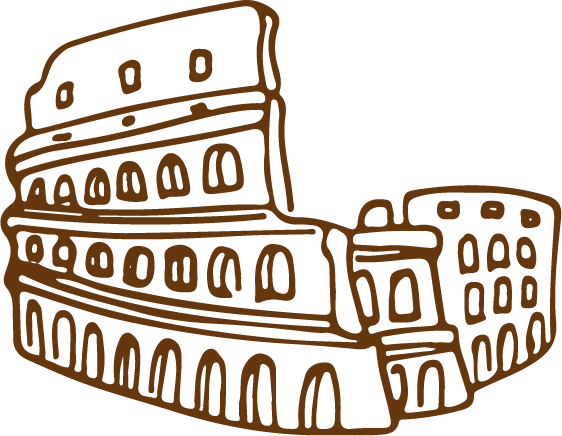Some interesting facts!
Some interesting facts which will help you understand the Italian menu.
Spaghetti alla bolognese (or spag bol) is a pasta dish invented outside of Italy , and although very popular in various countries, the sauce is never served with spaghetti in Bologna (or elsewhere in Italy), as the pieces of meat do not cling to this shape of pasta. Bolognese sauce (ragu) is usually served with tagliatelle or in a lasagna. The authentic recipe is codified at the Chamber of Commerce in Bologna, although many regions use their own version.
Here are a few to start!
Tiramisù (Tira mi sù) - Pick me up or lift me up! (The authentic recipe does not have any alcohol or sponge fingers! The rest is a secret!)
Bolognese - from Bologna
Caprese - from Capri
Milanese - from Milan
Bocconcini - small mouthfuls
Fettunta – bread toasted, rubbed with fresh garlic and drizzled with olive oil
Bruschetta – as fettunta but with chopped and seeded tomatoes & basil
Tortelli – pasta filled shapes
Pecorino – sheep’s cheese (little sheep)
Ricotta – whey cheese (literally meaning ‘recooked’) can be eaten by those with milk allergies.
The real Cappuccino and Espresso
The cappuccino is the mainstay of Italian coffee culture, and the name is derived from 'hood' – the foam on top of the coffee resembling the hooded robe of the Capuchin friars. A real cappuccino should be one third espresso coffee, one third steamed milk and one third foamed milk, and it must be white at the centre with stronger coffee shades around the rim. The cup is also important – too big is not a good sign – and it must not be boiling hot. (If you want it hot, ask for 'cappuccino caldo.') The Italians do not usually order cappuccino after 11am as it is a breakfast drink, hence the strange looks from waiters when tourists ask for one after a meal! Now waiters are beginning to offer tourists what they think they want.
Espresso is another story – in Italian it means 'quick'. Don't forget, most Italians 'drink and go' and stand at the bar; if you sit down it will cost you more (sometimes double). The International Institute of Coffee Tasters recommends that espresso should always be drunk out of a small cup, with a capacity approximately twice the volume of the drink, allowing the 'cream' on top to convey the aroma to the nose. A well-made espresso gives you a haunting glimpse into the very soul of coffee. The moment of truth. A few sips and then it is gone – but leaving an exquisite aftertaste.
These are just a few tips! Plenty more to discuss over supper and a glass of wine or coffee!



